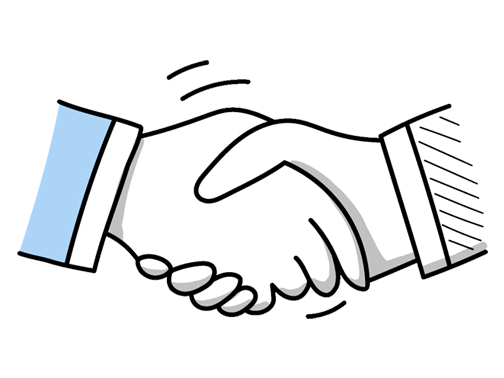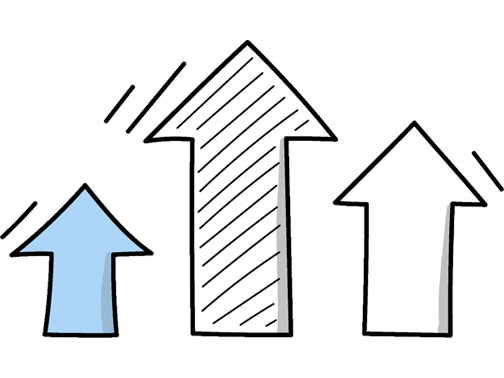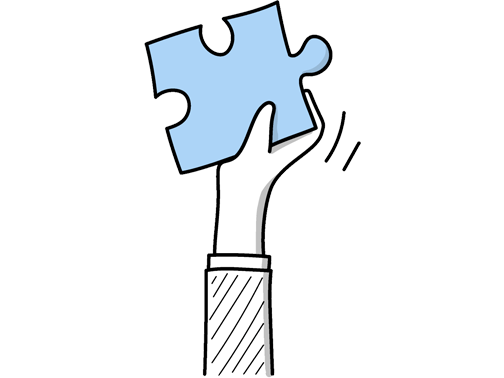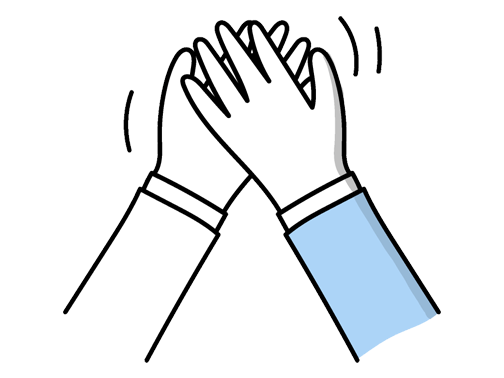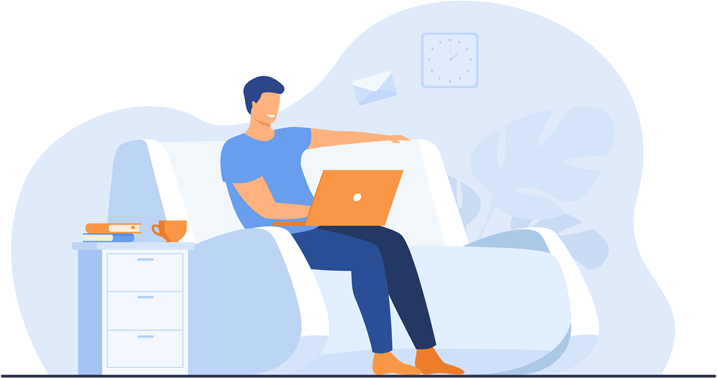Senior Interior Designer Interview Questions (2025 Guide)
Find out common Senior Interior Designer questions, how to answer, and tips for your next job interview
Practice Interviews Online - Identify your strengths and weakness in a realistic Senior Interior Designer mock interview, under 10 minutes
Practice Now »Senior Interior Designer Interview Questions
This question aims to assess your technical skills and how you leverage design tools to enhance your work. You need to highlight your proficiency with CAD software like AutoCAD and explain how you used these tools to solve design problems or improve project efficiency.
Example: I’ve worked extensively with CAD software, mainly AutoCAD and Revit, to create precise floor plans and 3D models that help clients visualize the space clearly. Using these tools has often streamlined revisions and improved communication with contractors. I’m also keeping up with new design technologies, like parametric modelling, to stay efficient and innovative in my approach. Learning and adapting to new software is something I genuinely enjoy.
Hiring managers ask this question to understand how you prioritize client needs, aesthetics, and functionality in your designs. You need to explain that your design decisions are primarily influenced by client lifestyle and project requirements, and give examples where you successfully balanced beauty with practicality while adapting to different styles.
Example: What shapes my design decisions most is understanding the space’s purpose and the people who’ll use it. I aim to create interiors that not only look inviting but work seamlessly in daily life. Whether it’s a sleek modern office or a cozy family home, I adapt my approach to suit the project’s character and needs. For example, I once balanced contemporary style with practical storage in a small London flat, making it both stylish and livable.
Hiring managers ask this question to see if you prioritize eco-friendly practices and understand their impact on both the environment and clients. You need to explain how you select sustainable materials and integrate energy-efficient solutions to create designs that are both beautiful and responsible.
Example: I focus on choosing materials that are durable and locally sourced to reduce environmental impact. For example, using reclaimed wood or low-VOC paints not only supports sustainability but also creates healthier spaces. I also consider energy efficiency through smart lighting and insulation. Ultimately, it’s about balancing aesthetics with responsibility, ensuring each design respects both people and the planet.
This question helps interviewers see how well you communicate and collaborate with others in a team setting, which is crucial for complex design projects. In your answer, describe a specific project where you worked closely with designers or architects, how you communicated your ideas clearly, resolved any conflicts, and contributed to a successful outcome that met client goals.
Example: During a recent project, I worked closely with architects and fellow designers to harmonise our visions for a commercial space. We held regular meetings to align on ideas and address concerns promptly, which helped prevent misunderstandings. When conflicts arose, I focused on listening and finding common ground. This collaborative approach ensured the design was cohesive and delivered on time, earning positive feedback from both clients and the team.
This question assesses your commitment to continuous learning and adaptability in a fast-evolving field. You need to say that you regularly read design publications, attend industry events, and apply new technologies to your projects to stay current and relevant.
Example: I make it a habit to regularly read leading design publications and attend industry events to catch emerging trends. Engaging with a community of fellow designers helps me exchange ideas and stay inspired. I also enjoy experimenting with new software or materials on projects, which ensures fresh concepts aren’t just theoretical but practical and client-ready. This approach keeps my work both relevant and innovative.
This interview question helps assess your ability to collaborate effectively and remain flexible while maintaining professionalism. You need to explain that you actively listen by asking clarifying questions, adapt your designs based on feedback, and communicate clearly to manage client expectations diplomatically.
Example: When clients share their thoughts, I make sure to listen carefully and clarify any points to truly grasp their vision. I stay open to tweaking designs and see revisions as part of the creative process rather than setbacks. Clear, respectful communication helps keep everyone aligned and expectations realistic. For example, in a recent project, adjusting layouts based on client insights led to a more personalised and successful final design.
Employers ask this question to see how you balance creativity with client requirements while ensuring satisfaction throughout the project. You need to explain that you establish clear communication, translate client needs into practical design concepts, and maintain ongoing collaboration with regular updates to keep the client involved and happy.
Example: I start by having open conversations to grasp exactly what the client envisions. From there, I develop designs that balance their style with practical use. Throughout the process, I keep them involved by sharing progress regularly and inviting feedback. For example, with a recent project, this approach helped us tweak the layout early on, ensuring the final space felt personal and functional.
Employers ask this question to gauge how you communicate, collaborate, and adapt within a team. You need to say that you flexibly take on leadership or support roles, communicate design ideas clearly, and actively encourage teamwork to achieve the best project outcomes.
Example: In a team, I adapt to what's needed—whether leading a project or supporting others. Communication is key, so I make sure everyone’s on the same page to avoid misunderstandings. I also focus on building good relationships, like when I collaborated closely with architects and contractors to keep things running smoothly, which really helped create a positive, productive atmosphere for everyone involved.
Interviewers ask this to see how you manage time and stay organized under pressure. You need to explain that you create detailed schedules, assess task urgency and impact to prioritize effectively, and maintain clear communication with clients and your team throughout the projects.
Example: When juggling several projects, I start by evaluating deadlines and the scope of each task to understand what needs immediate attention. I break down complex projects into manageable steps and set realistic milestones. Regular check-ins with my team and clients help keep everyone aligned and allow me to adjust priorities as needed. This approach ensures steady progress without compromising on quality or creativity.
Questions like this assess your flexibility and communication skills when facing unexpected challenges. You need to explain that you stay calm, clearly communicate impacts to stakeholders, and adapt your plans to meet new requirements while maintaining project goals.
Example: When project needs shift, I stay flexible and open, first clarifying the new goals with the client to fully understand their vision. Then, I assess how the changes affect timelines and budgets, communicating any implications clearly to keep everyone aligned. For example, on a recent residential project, adjusting the layout mid-way meant revisiting materials and schedules, which we managed smoothly by maintaining open dialogue and prioritising key design elements.
This interview question is designed to assess how well you communicate, build trust, and gather essential project details from clients. You need to explain that you create a welcoming atmosphere, ask open-ended questions to understand their vision, and clearly discuss budget and timeline to plan effectively.
Example: When I meet a new client, I start by listening carefully to their ideas and lifestyle, which helps me grasp what truly matters to them. I aim to create a comfortable space where they feel heard and understood, fostering trust right away. From there, I take detailed notes on their preferences, budget, and timeline, making sure I have all the essentials to shape a design that reflects their vision perfectly.
What they want to understand is how you prioritize tasks and stay organized under pressure. You need to explain the specific strategies you used to manage deadlines effectively and ensure all aspects of the project were completed on time.
Example: In a recent commercial renovation, I juggled overlapping deadlines by breaking the project into clear phases and coordinating closely with contractors and suppliers. Regular check-ins helped me spot potential delays early, allowing timely adjustments. For example, when material deliveries were postponed, I rescheduled tasks to keep the design and installation on track without compromising quality. This approach ensured smooth progress and on-time completion.
Employers ask this to assess your problem-solving skills and ability to manage budgets under pressure. You need to clearly explain what caused the budget overrun, the actions you took to control costs, and how you communicated with clients and your team throughout the process.
Example: On a recent residential project, unexpected material price increases pushed us over budget. I reviewed the specifications with the supplier and proposed alternative finishes that maintained quality but cost less. I kept the client and contractor informed throughout, which helped manage expectations and avoid surprises. By staying transparent and flexible, we delivered a design that satisfied everyone without compromising the vision.
What they want to understand is how you prioritize safety and legality in your designs by staying informed about relevant UK building codes and proactively addressing compliance throughout the project. You need to explain that you continuously reference standards like Building Regulations Part L and Part M, integrate regular compliance reviews into your workflow, and adjust designs creatively to meet requirements without sacrificing design quality.
Example: To ensure my designs meet all building codes, I stay updated with UK regulations and weave compliance checks into every stage of the project. For example, when working on a recent office redesign, I collaborated closely with structural engineers to resolve fire safety concerns without compromising aesthetics. This proactive approach helps me navigate any challenges and deliver spaces that are both beautiful and fully compliant.
This interview question helps assess your ability to create spaces that are both beautiful and practical, ensuring user satisfaction and project success. You need to say that you prioritize understanding the client's needs, then integrate design elements that enhance usability without compromising style.
Example: Balancing aesthetics and functionality is about understanding the client’s lifestyle and practical needs while creating spaces that inspire. For example, in a recent project, I chose materials that look elegant but are also durable and easy to maintain. It’s about blending beauty with purpose so the design not only looks great but works seamlessly day to day. Ultimately, a space should feel both inviting and efficient.
Hiring managers ask this question to assess your communication skills and ability to handle conflict professionally. You need to explain a specific example showing patience and problem-solving, emphasizing how you listened to the client’s concerns and found a solution that met their needs while maintaining project goals.
Example: There was a project where a client kept changing their mind about the design direction, which caused delays. I took the time to listen carefully to their concerns, clarified their priorities, and suggested a few flexible options that balanced their vision with practical constraints. By maintaining open communication and patience, we found a solution that satisfied them and kept the project on track. It turned a challenging relationship into a productive collaboration.
Interviewers ask this to assess your teamwork skills and your ability to contribute effectively to group goals. You need to clearly describe the project, your specific role, and how your actions helped achieve success.
Example: In a recent project designing a boutique hotel, I collaborated closely with architects and contractors to create cohesive, functional spaces. I led the concept development, ensuring the design reflected both the client’s vision and practical needs. By fostering open communication, we resolved challenges quickly, delivering the project on time and within budget. It was rewarding to see how our combined efforts transformed the space into a memorable experience for guests.
Hiring managers ask this question to understand your fundamental approach to design and how it shapes your work. You need to clearly state your core principles, like balancing functionality and aesthetics, explain how you tailor designs to client needs and contexts, and briefly mention a project that exemplifies your philosophy.
Example: I believe good design balances function and beauty, tailored to each client's unique story and space. I focus on creating environments that feel personal and practical, like a recent project where I transformed a historic home into a modern family hub without losing its character. It’s about listening closely, respecting context, and crafting spaces that truly enhance everyday life.
Hiring managers ask this question to understand your technical skills and how you integrate 3D modeling into your design process. You need to explain specific projects where you used 3D modeling to visualize concepts, improve client communication, or solve design challenges effectively.
Example: In my previous projects, I've relied on 3D modeling to bring designs to life for clients and contractors. For example, in a recent residential project, I created detailed 3D visuals to help the client understand spatial flow and lighting, which made decision-making smoother. It also allowed the construction team to anticipate challenges early, saving time and avoiding costly changes during installation. This tool has become essential in bridging design intent and practical execution.
This question assesses your familiarity with industry-standard tools that help keep design projects organized and on track. You need to mention specific software you use, like MS Project or Trello, and explain how it helps you manage timelines and team collaboration effectively.
Example: I typically use tools like Microsoft Project and Trello to keep projects on track, as they help visualize timelines and task dependencies clearly. For day-to-day scheduling, I often rely on Outlook calendars to coordinate meetings and deadlines efficiently. These platforms keep the team aligned and ensure milestones are met without fuss, which is crucial when juggling multiple design phases simultaneously.
Questions like this assess your ability to balance aesthetics, functionality, budget, and client needs when making design decisions. In your answer, explain that you start by understanding the project goals and client preferences, then research materials for durability and cost, ensuring they complement the design vision while meeting practical requirements.
Example: When selecting materials and finishes, I start by understanding the client’s lifestyle and the project’s function. I consider durability, aesthetics, and sustainability—like choosing natural oak for warmth in a family home or sleek metals in a commercial space. I also test textures and colours in natural light to ensure they complement the design, making sure every choice supports both form and function.
Questions like this assess your ability to foster collaboration and clarity in a team setting, which is crucial for a smooth design process and successful project outcomes. You need to say that you prioritize clear, consistent updates and encourage open feedback to keep everyone aligned and motivated.
Example: I focus on creating an open environment where everyone feels comfortable sharing ideas and concerns. Regular check-ins help keep the team aligned and projects on track. For example, in my last project, brief daily huddles allowed us to quickly address challenges and adjust designs efficiently. Clear, honest communication builds trust and ensures we deliver cohesive results together.
Interviewers ask this question to understand your unique aesthetic and how it influences your work. You need to clearly describe a project that highlights your design approach and explain why it reflects your style.
Example: One project that really captures my design approach was a boutique hotel in London. I focused on blending modern minimalism with warm, textured materials to create a welcoming yet sophisticated atmosphere. Using natural light and custom furnishings, the space feels both functional and inviting—reflecting my belief that good design should enhance everyday experience without overwhelming it. It’s a balance I always aim for.
Employers ask this question to see how clearly and persuasively you communicate your ideas and collaborate with clients. You need to explain that you use clear, simple language and visual aids tailored to the client’s style while actively encouraging their feedback to ensure the design meets their needs.
Example: When presenting ideas, I focus on clear, straightforward communication, making sure the client really understands the vision. I adapt my approach based on what resonates with each client—sometimes visuals work best, other times a story or concept board. I also encourage open dialogue throughout, welcoming their input so the design evolves with their feedback, ensuring the final result feels personal and thoughtfully crafted.
Interviewers ask this to see if you can maintain a positive team dynamic and keep projects moving smoothly despite challenges. You need to say that you listen actively to understand all viewpoints, stay calm and professional, and work collaboratively to find solutions that satisfy everyone involved.
Example: When disagreements arise, I focus on open dialogue, encouraging everyone to share their perspectives. I listen carefully to understand the root of the issue and steer the conversation toward common goals. In one project, this approach helped us merge contrasting design ideas into a solution everyone felt proud of, turning potential conflict into a creative advantage. It’s about keeping respect and teamwork at the heart of the process.
Ace your next Senior Interior Designer interview with even more questions and answers
Common Interview Questions To Expect
The interviewer is looking for your long-term career goals, ambition, and commitment to the company. Answers should demonstrate a clear vision and alignment with the company's objectives.
Example: In five years, I see myself leading a team of designers on high-profile projects, pushing the boundaries of innovative design in the industry. I am committed to continuously growing and developing my skills to contribute to the success of the company. My goal is to become a key player in shaping the future of interior design.
The interviewer is looking for a candidate who has done their research on the company, understands its values, goals, and services, and can demonstrate how their skills align with the company's needs.
Example: I know that your company is a leading interior design firm in the UK, known for creating innovative and stylish spaces for clients. I admire your commitment to sustainability and using eco-friendly materials in your designs. I believe my experience in creating functional and aesthetically pleasing interiors aligns well with your company's values and goals.
Interviewers are looking for honesty, professionalism, and a positive attitude in your response. Be prepared to explain any reasons for leaving your previous job in a constructive manner.
Example: I left my last job because I was looking for new challenges and opportunities to grow in my career. I felt like I had reached a plateau in my previous role and wanted to explore different projects and design styles. I am excited about the possibility of bringing my experience and creativity to a new team.
Interviewees can answer by acknowledging a mistake, explaining how they rectified it, and highlighting lessons learned. Interviewers are looking for accountability, problem-solving skills, and ability to learn from mistakes.
Example: Yes, I once made a mistake in a design presentation where I overlooked a key detail. I immediately owned up to the error, worked with my team to find a solution, and made sure to double-check all details in future presentations. It taught me the importance of thoroughness and attention to detail in my work.
The interviewer is looking for the candidate to show interest in the company, the role, and the team. They want to see that the candidate is prepared and engaged in the interview process.
Example: Yes, I was wondering about the team dynamic here and how collaboration plays a role in projects. Can you tell me more about the company culture and how it supports creativity in design? Also, I'm curious about the opportunities for professional development and growth within the company.
Company Research Tips
The company's website is a goldmine of information. Look for details about the company's history, mission, values, and culture. Pay special attention to their portfolio or projects section to understand their design style, the types of projects they handle, and their client base. This will give you a sense of their aesthetic and the kind of design work you might be doing.
Tip: Don't just skim through the website. Take notes and think about how you can contribute to their ongoing projects or how your skills align with their needs.
Social media platforms can provide insights into the company's latest projects, their interaction with clients, and their work culture. Platforms like LinkedIn can give you information about the company's size, location, and employee roles. Instagram and Pinterest can provide a visual representation of their design style and creativity.
Tip: Follow the company on these platforms to stay updated with their latest work. Engage with their posts to show your interest.
Industry-specific news and blogs can provide information about the company's reputation in the market, their competitors, and recent industry trends. This can help you understand where the company stands in the industry and what challenges they might be facing.
Tip: Use this information to discuss how you can help the company overcome these challenges or stay ahead of the competition during your interview.
Websites like Glassdoor provide reviews from current and former employees. These reviews can give you a sense of the company's work environment, management style, and employee satisfaction. However, take these reviews with a grain of salt as they can be biased.
Tip: Look for common themes in the reviews. If many employees mention a specific issue, it's likely a real concern.
What to wear to an Senior Interior Designer interview
- Dark or neutral coloured suit
- White or light coloured shirt
- Conservative tie or scarf
- Polished dress shoes
- Minimal jewellery
- Professional watch
- Clean, neat hairstyle
- Light makeup for women
- Well-groomed facial hair for men
- Carry a portfolio of your work
